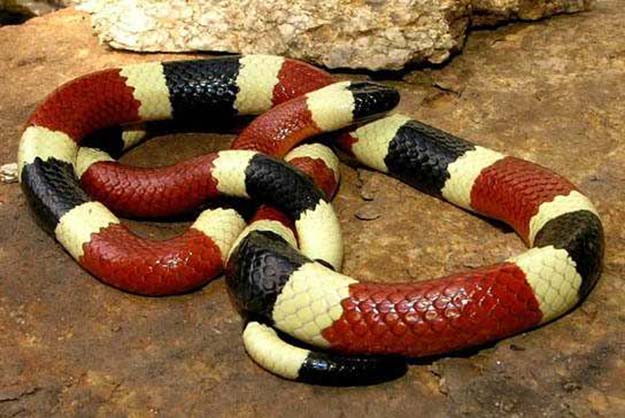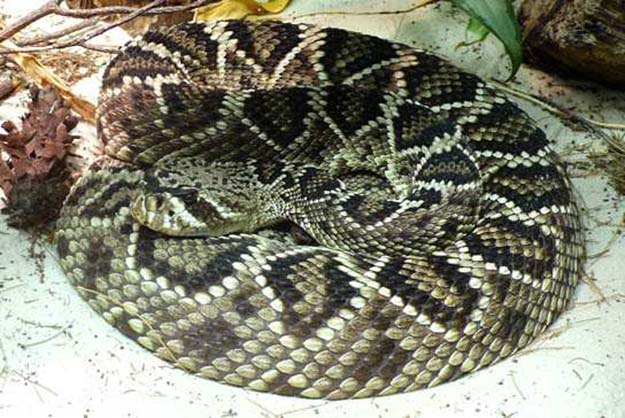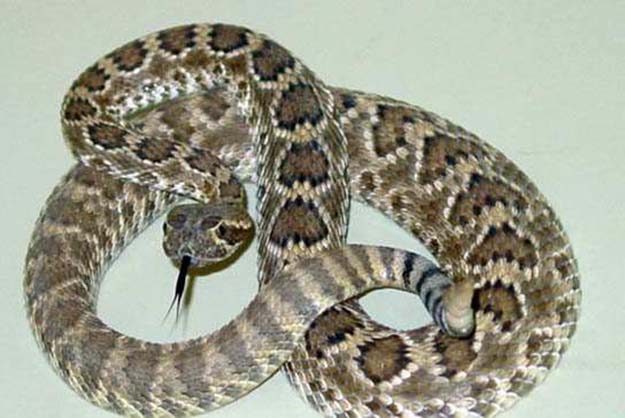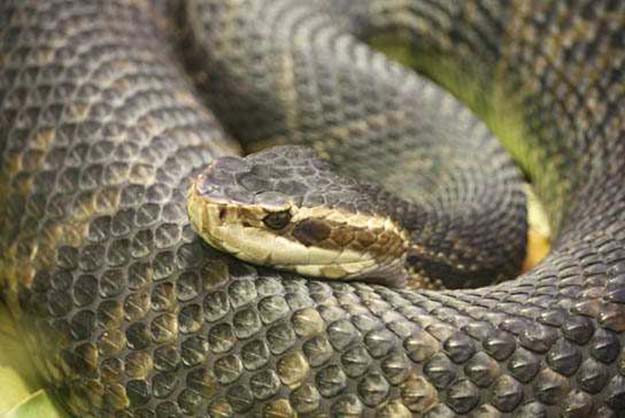Now, from what I have been told venomous snakes rarely bite humans, but sometimes it can be all too easy to unintentionally intrude on their space.
Eastern Diamondback Rattlesnake
Commonly found in the southeastern regions of the United States in lower coastal plains; southeast North Carolina to the Florida Keys, west to south Mississippi, and east Louisiana. Attains a maximum length of 96″ which makes it our largest rattlesnake. This snake has a reputation for being the most dangerous snake in North America.
Timber Rattlesnake
Commonly found in most of the eastern regions of the United States, except the extreme northern regions. Attains a maximum length of about 75″. Prefers remote wooded hillsides with rock outcrops, swampy areas, and floodplains.
Mojave Rattlesnake
Commonly found in southeastern regions of the United States; south Nevada, south California and southwest Utah. Attains a maximum length of about 51″. Prefers upland desert flatland supporting mesquite, creosote bush and cacti; also arid lowland with sparse vegetation, grassy plains, Joshua tree forests, and rock hills.
Cottonmouth
Commonly found in the southeastern regions of the United States. This snake mainly resides in southern Missouri to south-central Oklahoma and central Texas. Attains a maximum length of about 75″. A very dangerous and aggressive snake. Prefers lowland swamps, lakes, rivers, bayheads, sloughs, irrigation ditches, and small clear rocky streams.
Western Coral Snake
Prefers rocky areas and plains to lower mountain slopes. Can also be found in rocky upland desert in arroyos and river bottoms. The habitat of the Western Coral Snake ranges from central Arizona to southwest New Mexico south to Mexico. Do not confuse this poisonous snake with other species that are harmless, such as the Milk Snake. The Coral snake has red and yellow bands that are adjacent. The non venomous species have red and black bands that are adjacent. Remember this saying? “Red and yellow can kill a fellow, but red and black is a friend of Jack.”
If you would like to see more visit our friends over at survivallife.com.






“Red on black, friend of Jack. Red on yellow, kill a fellow.”
You forgot about the one in the Oval Office.
He left already, he isn’t in the Oval Office anymore,, He is on the side lines still trying to control this Country..
You forgot copperhead, cotton mouth…
You forgot copperhead, cotton mouth…